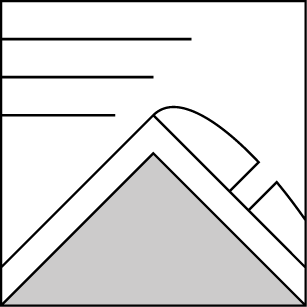Basic Information
Observation Details
Observation Date:
December 20, 2021Submitted:
December 21, 2021Observer:
SAC - VandenBosZone or Region:
Sawtooth and Western Smoky MtnsLocation:
McDonald (6,900-9,100, N-NE-E-SE-S)Signs of Unstable Snow
Recent Avalanches?
None ObservedCracking?
IsolatedCollapsing?
None ExperiencedSnow Stability
Stability Rating:
FairConfidence in Rating:
LowStability Trend:
SteadyAdvanced Information
Weather Summary
Cloud Cover:
Partly CloudyWind:
Strong , WMuch cloudier than forecast. Cloud holes opening over the valley later in the day but mountains held a cloud shroud through the day. Moderate winds gusting strong out of the W. Too much wind transport to get a great sense of amount of new snow overnight, estimated at 15cm.
Avalanche Observations
None observed, but the light was pretty marginal when I was up high.
Snowpack Observations
Primary goal was to continue the snowpack inventory with a focus on character of 12/11, presence/character of 12/19, and a look at surfaces (probably going to be 12/21). Mental model had the southern Sawtooths as being a drier spot, with snow depths increasing as you head both south and north. This seems about right, though tough to say exactly where the dividing lines are. Alturas to the south and Redfish to the north seem like decent guesses, but these are just hunches, not field verified.
In areas without snow prior to 12/11, HS=50-60cm. As I climbed up and began to encounter old snow underneath HS=80-90cm at 8,000' and 90-100cm at 9,000'. Slab of snow that sits on top of 12/11 is 55-65cm thick and grades smoothly from F at the top to 1F+ at the base. This slab is thick and stiff enough to be boot supportable (boot pen=35-40, ski pen=25-30cm). Underneath is our new old friend. I dug at 8,200' on a sheltered NE-facing slope, where HS=85cm. 12/11 presented as a pair of crusts from periods of warm air, with 8-10cm of DH (think it is safe to start calling this DH). Grains are cupped and striated, with some chains. I was able to detect some ever so slightly rounded grains in this interval (DHxr) but these were the exception; near the crusts where the gradients are steepest the grains were quite crisp. This layer produced ECTP 15 and 20, PST 23/100 END, CPST 21/100 END.
I did some hand pitting looking for signs of crusts on solars at 12/19 interface. I was able to find some on steeper souths (33+) at lower elevations but they were much less pronounced/absent as I climbed higher. Where I've been finding these crusts south of Galena Pass they have been relatively soft, but obvious enough to detect in hand pits. Mental model has this interface being less concerning north of the pass, but confidence on this is low thanks to absence of field data. Today, low elevation solars were taking a suncrust but as I climbed higher into more cloud-shrouded terrain this crust was absent/much less obvious.
Collapsing has become less common, but consistently unstable snowpack test scores, ugly snowpack structure, DH grain conformations, and a history of avalanche activity make this weak layer hard to trust.
Avalanche Problems
| Problem | Location | Distribution | Sensitivity | Size | Comments |
|---|---|---|---|---|---|
 Persistent Slab
Persistent Slab
|
|
Layer Depth/Date: down 60cm Weak Layer(s): Dec 11, 2021 (FC) Comments: Rose shaded based on where problem is known to be present and at its worst. |
|||
 Wind Slab
Wind Slab
|
|
Comments: Wind slabs that I encountered were stubborn to unreactive. They seemed sticky, warm, and reasonably well glued on. I think you could go trigger one but you'd need to be looking for one that is sitting on the right surface underneath. Bigger concern seems to be that they are adding structure to the slab and load to the persistent problem described above. |
Terrain Use
Continuing to avoid all but the smallest, lowest consequence avalanche terrain where 12/11 is present and at its worst.
